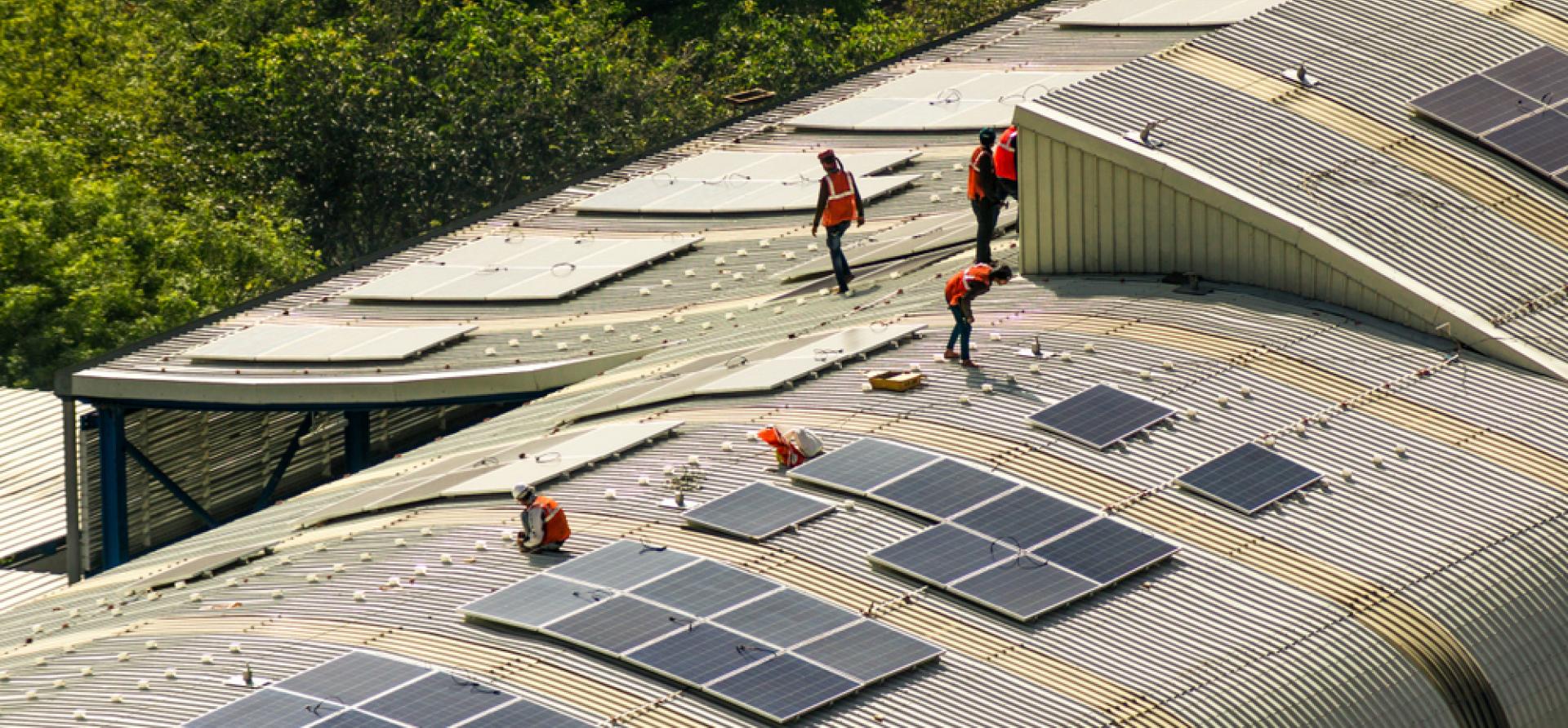Integrating higher shares of variable renewable energy in India
Download Full Report
View Press Release

Key Findings
To cut emissions, India needs to increase renewable energy integration/absorption. Between 2016 and 2022, renewable energy’s share in total electricity generation grew only by 6.5 percentage points, while its share in total capacity addition grew by 13.6 percentage points.
Demand-side measures and expanded transmission network will help in reducing grid balancing needs and will also help in integrating renewable energy.
Energy storage technologies can be utilised to provide a variety of grid balancing services.
Running existing coal or gas power plants at low load factors and flexibly to stabilise the grid will help increase the share of variable renewable energy in the electricity supply mix. A renewable energy rich power system will aid in decarbonisation of other sectors, such as transportation and manufacturing industry.
Executive Summary
India faces a formidable challenge of ensuring energy security amid rising international tensions, increased electricity demand and climate concerns. In response, the country is tapping into all available energy resources, including coal reserves, despite its commitment to reduce the emissions intensity of its gross domestic product (GDP) by 45% below 2005 levels. India is also rapidly adding renewable energy capacity, in fact, at a faster rate than fossil fuel-powered capacity, to meet the growing electricity demand.

To cut emissions and achieve its ambitious targets, India needs to build capacity to absorb/integrate higher shares of renewable energy, which has not kept pace with capacity additions. From 2016 to 2022, renewable energy’s share in total electricity generation grew only by 6.5 percentage points, while its share in total electricity capacity addition grew by 13.6 percentage points. A renewable-rich grid can also enable the decarbonisation of other sectors, including transportation and industry.
Given India's circumstances, the country can use a few potential levers to increase renewable energy integration in the power system. One of the immediate levers is introducing effective time-of-use (ToU) electricity tariffs to change consumption patterns to suit more renewable energy integration and lower grid balancing requirement. India should adopt a step-wise approach of introducing dynamic ToU electricity prices across consumer segments to reap the benefits.
Another lever is developing a well-connected, inter-regional national grid that optimises unevenly distributed renewable resources. India is on the right path in building the evacuation infrastructure through its Rs2.4 trillion (~US$29.6 billion) transmission infrastructure development plan to integrate over 500 gigawatts (GW) of renewable energy capacity by 2030. This would also help integrate more renewable energy capacity from remote regions into the power system and improve grid stability.
Energy storage technologies are evolving rapidly and could play a vital role in increasing the share of renewable energy generation. Pumped Hydro Storage (PHS) projects and Battery Energy Storage Systems (BESS) are promising among energy storage technologies. India is on the cusp of witnessing a spurt in energy storage activity, but it is largely limited to providing a stable renewable energy supply.
Energy storage technologies are evolving rapidly and could play a vital role in increasing the share of renewable energy generation.
As a next step, the country should widen the scope of energy storage applications to provide a variety of grid balancing services rather than viewing energy storage in one dimension of firming renewable energy supply. A well-developed ancillary services market will improve the grid's flexibility, reliability and resilience, allowing a higher integration of variable renewable energy.
Lastly, the Indian government’s plan to convert coal-based power plants to operate flexibly to accommodate more renewable energy may hold some benefits of lower capital expenditure requirements and reducing the curtailing of variable renewable energy in the medium term. Technical studies indicate that coal power plants could run at a minimum power load of 10%, and in India at 40%, after modernisation and upgradation of the equipment.
Converting India's coal power fleet to run flexibly will lead to some technical, financial, and regulatory/contractual challenges. The solutions include identifying suitable plants for conversion into flexible plants based on technical and financial parameters, redesigning coal power purchase contracts, and developing markets that allow flexible operations.















